Greater KL ridership hits new high
By THE STAR | 25 August 2024
KUALA LUMPUR: Observers of mobility in Malaysia were pleasantly surprised by the latest official data on public transport ridership released by the Transport Ministry (MOT) as well as Prasarana Malaysia Bhd, the country’s largest operator of urban rail and bus services in Klang Valley.
Data from MOT, as provided through data.gov.my, showed that there was an 11% increase in public transport ridership encompassing rail and bus in July compared to June, with rail recording a 10.8% increase, while buses showed an 11.8% increase.
The country’s most well-used metro line, Kelana Jaya LRT, continued to draw users with ridership up by 15.3%, followed by the Putrajaya MRT (up 14.7%), and the Kajang MRT (up 11.1%).
Prasarana, operator of the Rapid Rail and Rapid Bus services that also cover Kuantan, Taiping and Penang, showed that nearly 35 million trips were made using its network of trains – the highest ever ridership recorded since 2021 from the combination of MRT, LRT, KL Monorail – and buses in Klang Valley, Kuantan and Penang (see myrapid.com.my/bus-train/ridership).
Interestingly, monthly ridership in the seven-year-old Kajang MRT for July is 7,471,333 passengers, close to matching the current “king”, the Kelana Jaya LRT, which saw 7,559,800 passengers, thus validating the planning by transport planners when the Kajang MRT was conceived to serve the underserved corridor between Sungai Buloh and Kajang.
In a response to The Star, Prasarana attributed the increase to major enhancements to its rail lines.
“With the addition of new trains, a significant rise can be seen in the number of rail users, and passenger waiting time has been improved. The Kelana Jaya Line is now operating with 56 trains with a frequency of three minutes. In 2022, Kelana Jaya Line was operating 41 trains with a frequency of 4.1 minutes during peak hours.
“The Kajang Line operates with 39 trains with a frequency of four minutes. In 2022, the line was operating 28 trains with a frequency of 5.6 minutes during peak hours,” it said in a statement.
Making significant progress in bus and van services
Much cheer can be seen in the Demand Responsive Transit (DRT) service, which was introduced in May 2023, where it has recorded an increase in bookings/rides with over 126,000 in cumulative ridership as of July 31. DRT services here are operated using passenger vans that respond to “being summoned” by users through an app, thus allowing it to bridge the “last mile” journey for commuters.
“The introduction of this initiative has improved the first-last mile connectivity, with Rapid Bus planning to add 300 vans into the service – the first vans arriving in December, and the rest will be delivered progressively until July 2025,” said Prasarana, which claimed that additional buses on the road have also reduced wait times.
“Starting June 2024, outsourced buses have started to be delivered in stages, of which 23 are already in operation. A target of 310 buses will be progressively delivered from Q4 2025. The introduction of dedicated bus lanes in Kuala Lumpur (Jalan Ampang, Jalan Genting Kelang and Jalan Klang Lama), with the cooperation of the police and Kuala Lumpur City Hall, has also increased bus users’ confidence, allowing them to enjoy time savings and smoother journeys.
“This brings the total number of dedicated bus lanes in Kuala Lumpur to three, with more to be implemented in stages. On the Jalan Ampang bus lane, for instance, ridership has increased by 27% since the lane was introduced in July 2023. For Jalan Genting Kelang, ridership has increased by 42% since its introduction in November 2023.
Competitive concession travel deals also help
Prasarana maintains that the introduction of ticket products that offer travel savings to passengers has also been a key factor in attracting usage.
“The MyCity Pass package has now been improved, with subscriptions also open to non-Malaysians. MyCity Pass is an unlimited daily travel pass offering unlimited rides on Rapid KL LRT, MRT, Monorail, BRT (Bus Rapid Transit), Rapid KL bus and MRT feeder bus services in Klang Valley for one, two or three days.
“The My50 unlimited travel pass, available only for Malaysians, remains one of the cheapest in the world, making it an attractive and cost-saving option,” it added.
Recently, Transport Minister Anthony Loke said his ministry will ask the Finance Ministry for the yearly allocation for My50 to be continued in the upcoming budget.
Comprehensive planning critical
According to Yuslizar Daud, former head of the now-disbanded Land Public Transport Commission’s (SPAD) rail division, the opening of new attractions and developments along the rail alignment has also contributed significantly to the increase in ridership.“The introduction of Kajang and Putrajaya MRT Lines, along with developments such as Tun Razak Exchange (TRX) and the Merdeka 118 Precinct, are giving good indicators, along with the proposed Bandar Malaysia, the Titiwangsa transport hub and so on. There was the extension of the Kelana Jaya and Ampang LRT Lines, with seamless integration at Putra Heights, that widened the network,” he said.
“All these are good signs for putting in the MRT3 or Circle Line,” he said, adding that the My50 travel pass has also been a good answer to the rising cost of living.
Wan Agyl Wan Hassan, managing director of Agyl & Partners, said data on new vehicle registrations cast some doubt on whether the roads will be free-flowing even if public transport ridership increases.
“No doubt, public transit utilisation has increased with urban rail projects, and helped lower congestion, emissions and promote sustainable development. Notwithstanding this development, private car ownership is still somewhat strong. Following a little decline during the Covid-19 pandemic, car registrations jumped back powerfully to a record 799,731 units in 2023,” said Wan Agyl, a former official at SPAD’s policy and planning division.
He argued that if public transit is to compete, it must offer clear cost, convenience, and dependability benefits.
“Ignoring these elements could lead to the transient increase in public transit utilisation. The keys are raising general service quality and boosting network coverage, along with policies restricting automobile ownership.”
As policymakers debate on the best way to ensure sustainable mobility, users are groaning from the weight of increased passengers at transport terminals.
“It is now a norm for me to wait for two or three trains to pass by before I can squeeze into one during peak hours,” lamented Sherry Kong, a regular user of the MRT from Cyberjaya.
She also complained about the absence of park-and-ride facilities at the station has led many to illegally park along the road, which in turn makes it difficult for buses to manoeuvre.
“I hope the government will be ready for yet another bump when it eventually removes the subsidy for petrol. If the situation is like this before the subsidy removal, I cannot imagine how it will be when it actually happens,” she said. — MENG YEW CHOONG
Tags
Autos News
Reviews

First drive with the 2025 Hyundai Tuscon and Santa Fe: Seoul...
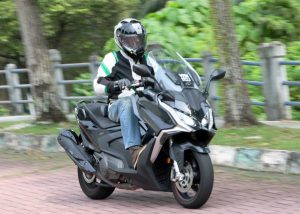
5.8
Kymco AK550 Premium: Smart easy rider
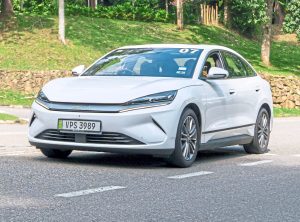
BYD Seal 6 Premium: Sweet deal, generous kit, sensible prici...
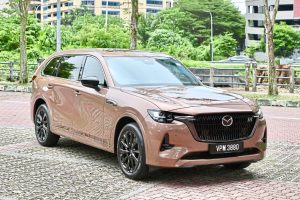
8.7
Mazda CX-80 2.5G PHEV AWD High Plus: Upmarket upgrade
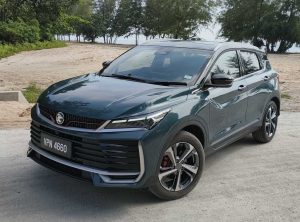
Proton X50 Flagship: Tuned for success
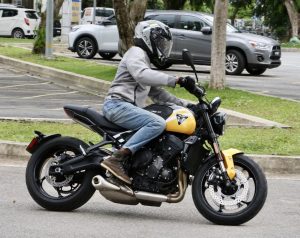
6.6
Triumph Trident 660: Beautifully balanced package

8.4
Mercedes-AMG GLA 35 4Matic: Never a dull moment

Lamborghini Urus SE: Ultimate control
Videos

Free & Easy Media Test: Latest Proton X50 Flagship to Kuanta...

Zeekr Space Sunway City Video

Honda Civic Type R Ultimate Edition: Last 40 Units for Europ...
